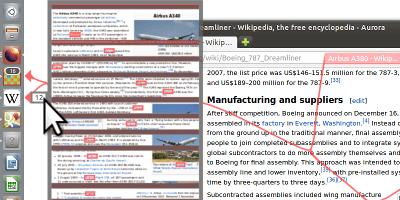Abstract
Content on computer screens is often inaccessible to users because it is hidden, e.g., occluded by other windows, outside the viewport, or overlooked. In search tasks, the efficient retrieval of sought content is important. Current software, however, only provides limited support to visualize hidden occurrences and rarely supports search synchronization crossing application boundaries. To remedy this situation, we introduce two novel visualization methods to guide users to hidden content.
Our first method generates awareness for occluded or out-of-viewport content using see-through visualization. For content that is either outside the screen's viewport or for data sources not opened at all, our second method shows off-screen indicators and an on-demand smart preview. To reduce the chances of overlooking content, we use visual links, i.e., visible edges, to connect the visible content or the visible representations of the hidden content. We show the validity of our methods in a user study, which demonstrates that our technique enables a faster localization of hidden content compared to traditional search functionality and thereby assists users in information retrieval tasks.
Citation
Thomas Geymayer,
Markus Steinberger,
Alexander Lex,
Marc Streit,
Dieter Schmalstieg
Show me the Invisible: Visualizing Hidden Content
Proceedings of the SIGCHI Conference on Human Factors in Computing Systems (CHI ’14), 3705--3714, doi:10.1145/2556288.2557032, 2014.
ACM CHI 2014 Honorable Mention Award
BibTeX
@inproceedings{2014_chi_hidden-content,
title = {Show me the Invisible: Visualizing Hidden Content},
author = {Thomas Geymayer and Markus Steinberger and Alexander Lex and Marc Streit and Dieter Schmalstieg},
booktitle = {Proceedings of the SIGCHI Conference on Human Factors in Computing Systems (CHI ’14)},
publisher = {ACM Press},
doi = {10.1145/2556288.2557032},
pages = {3705--3714},
year = {2014}
}
Acknowledgements
The authors wish to thank Manuela Waldner for her important suggestions. This research was funded by the Austrian Science Fund (FWF): P22902 and J~3437-N15, the government of Styria (A3-22.M-5/2012-21), the Austrian Research Promotion Agency (840232), and the Air Force Research Laboratory and DARPA grant FA8750-12-C-0300.
